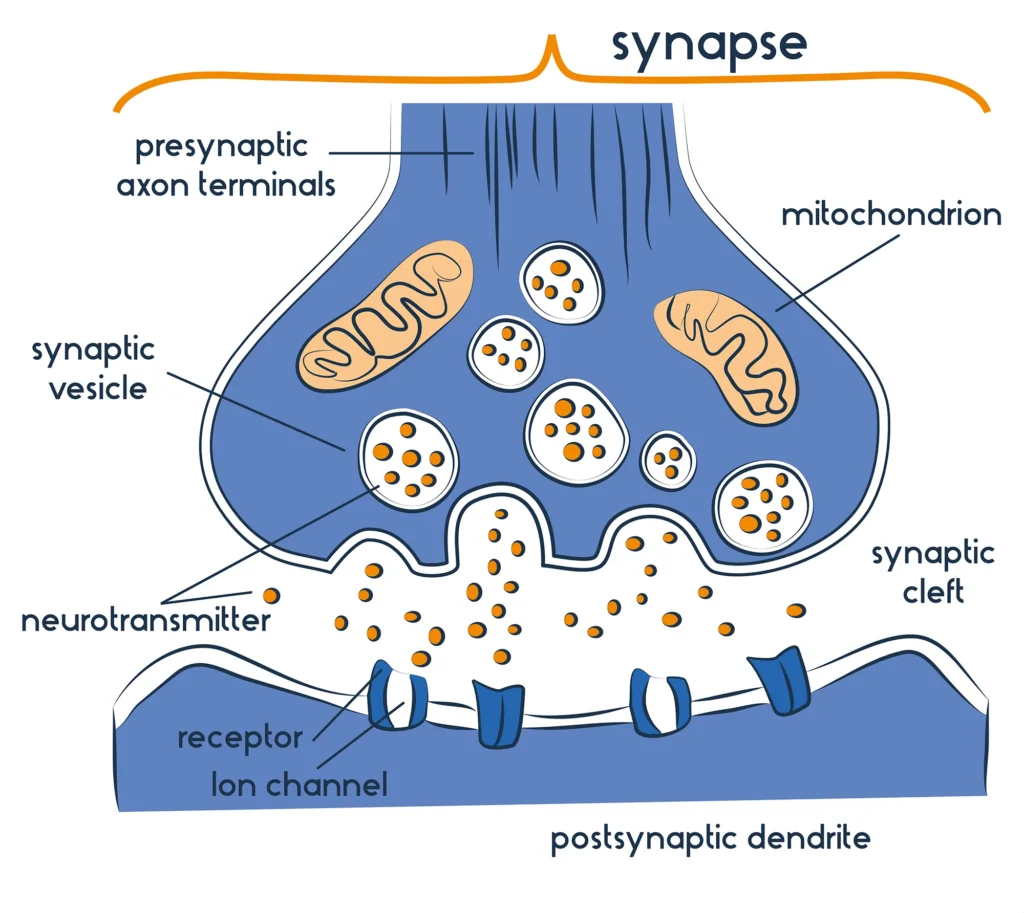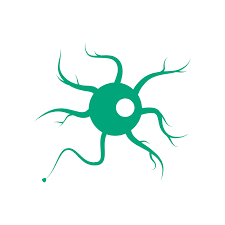Serotonin is far more than the “feel-good” neurotransmitter it is often made out to be. Its complex signaling pathways extend well beyond mood regulation, influencing anxiety, romantic bonding, and even cardiovascular health. Recent research spanning multiple countries and involving collaborations between academic institutions and biotech companies has broadened our understanding of serotonin’s roles in the brain and periphery. In this article, we delve into the latest discoveries, examine their implications, and explore how this intricate molecule is reshaping modern medicine and neuroscience.
Cerebellar Serotonin: A New Brake on Anxiety

Traditionally, serotonin has been viewed as a neurotransmitter that primarily increases anxiety when elevated. However, emerging studies from institutions in Europe and North America are challenging this view by revealing a more nuanced role—particularly within the cerebellum.
Key Findings:
- Bidirectional Control:
Researchers have demonstrated that by artificially stimulating or inhibiting serotonin-releasing neurons in the cerebellum, they can bidirectionally control anxiety responses. This means that cerebellar serotonin can function as a brake to reduce anxiety, contrary to the long-held belief that serotonin simply amplifies stress-related signals. - Implications for Treatment:
This discovery suggests that therapies targeting cerebellar serotonin pathways could offer new avenues for treating anxiety disorders. Pharmaceutical companies like Pfizer and Roche are now looking into designing molecules that can selectively modulate serotonin release in specific brain regions. - Collaborative Research:
Collaborative efforts between universities in Germany, the United States, and Japan are currently underway to further elucidate the cerebellum’s role in emotional regulation, potentially leading to a paradigm shift in how anxiety is managed.
Key Points:
- New Paradigm: Cerebellar serotonin acts as an inhibitory signal for anxiety.
- Targeted Therapy: Potential for drugs to selectively modulate this pathway.
- Global Collaboration: Studies from Europe, the US, and Asia underscore the worldwide interest in this research.
Serotonin Syndrome: From Historical Curiosity to Modern Clinical Challenge

Serotonin syndrome is a condition that has evolved from a historical footnote to a significant modern clinical concern. Initially reported in the 1950s with the advent of monoamine oxidase inhibitors (MAOIs), it was not until the introduction of selective serotonin reuptake inhibitors (SSRIs) that its incidence surged, highlighting the delicate balance of serotonin in the body.
Historical Context and Modern Data:
- Early Observations:
The syndrome was first noted in the 1950s and only became widely recognized in the 1980s. Initial case reports documented a range of symptoms from mild agitation to severe hyperthermia and neuromuscular abnormalities. - Recent Findings:
A 2002 report by the Toxic Exposure Surveillance System, involving 26,733 patients on SSRIs, found that 27% developed significant morbidity related to serotonin syndrome, with a small but serious number of fatalities. Such data have been central in clinical studies referenced by Medscape and other reputable medical sources. - Clinical Management:
Nurses and physicians are now trained to identify early signs of serotonin toxicity. A standard protocol often includes discontinuation of the offending agent, supportive care, and sometimes the use of serotonin antagonists.
Key Points:
- Historical Evolution: From MAOIs in the 1950s to SSRIs today.
- Incidence: Increased cases with modern antidepressants.
- Clinical Vigilance: Essential recognition and management protocols in place.
Neurochemistry of Love: The Intricate Dance Between Serotonin, Oxytocin, and Vasopressin
The neurochemistry underlying romantic attachment extends beyond the simplistic attribution of “love” to oxytocin. Serotonin plays a subtle yet profound role in modulating the emotions associated with love and attachment.
Insights into Relationship Dynamics:
- Hormonal Interplay:
While oxytocin is known for promoting bonding and trust, serotonin influences the stability and depth of these bonds. The interplay between these hormones may explain why the initial intensity of passionate love transitions into calmer, more secure attachment over time. - Supporting Research:
Studies published in USA Today and other scientific outlets have highlighted that alterations in serotonin levels can affect the intensity of emotional experiences in relationships. Research from institutions like the University of California has been pivotal in illustrating how serotonin interacts with vasopressin—a hormone implicated in monogamous pair bonding. - Therapeutic Implications:
Understanding this interplay has significant implications for mental health and relationship counseling. By targeting specific serotonin pathways, therapists might develop better strategies to manage conditions like depression or attachment disorders that can strain personal relationships.
Key Points:
- Hormonal Synergy: Serotonin works alongside oxytocin and vasopressin.
- Emotional Modulation: Affects the transition from passionate love to secure attachment.
- Research Impact: Studies from the USA and Europe drive our understanding of these dynamics.
Serotonin’s Role in Vascular Health
Beyond its central nervous system functions, serotonin plays a critical role in vascular health, particularly in the context of pulmonary arterial hypertension (PAH). Research published on Medscape has uncovered complex signaling pathways that involve serotonin transporters and receptors.
Molecular Mechanisms:
- Intracellular Signaling:
In pulmonary arterial smooth muscle cells, the activation of the 5-HT₁B receptor sets off cascades involving reactive oxygen species (ROS) and Rho-associated kinase (ROCK). These molecules trigger the phosphorylation and subsequent nuclear translocation of ERK1/2, which then drives the expression of genes linked to cell proliferation. - Cell Proliferation and Remodeling:
The nuclear translocation of phosphorylated ERK1/2 leads to the activation of transcription factors such as GATA-4, cyclinD1, and Egr-1, ultimately contributing to vascular remodeling and the development of PAH. - Pharmaceutical Interest:
Companies like Novartis and GlaxoSmithKline (GSK) are exploring drugs that can interfere with these pathways, offering hope for new treatments for PAH. Studies in countries such as China and Brazil are further examining these molecular mechanisms, expanding the global research footprint.
Key Points:
- Complex Signaling: 5-HT₁B receptor → ROS/ROCK → ERK1/2 pathway.
- Vascular Impact: Contributes to the cellular proliferation seen in PAH.
- Global Research: Active studies in China, Brazil, and Europe; major pharmaceutical interest.
Beyond the Brain: Peripheral Roles of Serotonin
Serotonin is not confined to the brain. In fact, a significant proportion of the body’s serotonin is produced in the gut, where it plays vital roles in digestion, bone metabolism, and immune function. This peripheral serotonin is now recognized as a key player in the gut-brain axis, influencing overall health in ways that are only beginning to be understood.
Expanded Physiological Impact:
- Gut-Brain Communication:
The gut produces over 90% of the body’s serotonin. This neurotransmitter acts locally to regulate gastrointestinal motility and function, and it also sends signals to the brain, influencing mood and behavior. - Immune Modulation:
Emerging research suggests that serotonin in the gut may modulate immune responses, potentially impacting conditions such as inflammatory bowel disease (IBD) and even systemic autoimmune disorders. - Bone Health:
Recent studies indicate that serotonin levels in the gut can affect bone density, adding another layer of complexity to how this molecule influences overall health.
Key Points:
- Gut Production: Majority of serotonin is produced outside the brain.
- Systemic Influence: Regulates digestion, immune function, and bone metabolism.
- Research Frontiers: Novel insights emerging from studies in the United States, Europe, and Asia.
Integrative Approaches: Multiomics and Systems Biology
To fully grasp the multifaceted roles of serotonin, researchers are increasingly turning to multiomics and systems biology. By integrating data from genomics, proteomics, transcriptomics, and metabolomics, scientists can build comprehensive models of serotonin signaling across different tissues and disease states.
Key Advantages:
- Holistic Understanding:
Multiomics provides a panoramic view of how serotonin impacts various physiological systems simultaneously. This integrated approach is crucial for unraveling the complexities of diseases that involve serotonin dysregulation. - Personalized Medicine:
Insights gained from multiomic analyses are paving the way for personalized treatment strategies. Companies like Illumina and Thermo Fisher Scientific are at the forefront of developing technologies that enable these integrative analyses. - Global Collaborations:
Research consortia across Europe, North America, and Asia are leveraging multiomics to explore the full spectrum of serotonin’s biological effects. These efforts are supported by initiatives such as the Human Cell Atlas, which aims to map every cell type in the human body.
Key Points:
- Integrated Data: Combining genomics, proteomics, and metabolomics.
- Tailored Therapies: Paving the way for personalized medical interventions.
- International Efforts: Collaborative research projects spanning multiple continents.
Embracing Complexity for Future Breakthroughs
The journey to fully understand serotonin is ongoing, and each new discovery opens up further questions. As we integrate findings from diverse fields—from neuroscience and cardiology to immunology and gastroenterology—the full scope of serotonin’s impact comes into clearer focus.
- Emerging Therapeutics:
With pharmaceutical giants and biotech startups investing heavily in serotonin research, the coming years promise novel therapeutics that could revolutionize treatment for anxiety disorders, depression, PAH, and other conditions. - Technological Advancements:
Cutting-edge technologies in imaging, molecular biology, and computational analysis are accelerating the pace of discovery. These tools enable researchers to track serotonin’s effects at cellular and molecular levels with unprecedented detail. - Global Impact:
Research initiatives around the world, from North America to Europe and Asia, are fostering a collaborative spirit that transcends borders. This global network of scientists and clinicians is united by the goal of translating complex research findings into tangible benefits for patients.
In embracing the multifaceted nature of serotonin, the scientific community is not only rewriting textbooks but also charting a course toward innovative therapies and diagnostic tools. As we continue to decode the intricate language of serotonin, we move closer to unlocking new possibilities for enhancing human health and well-being.
